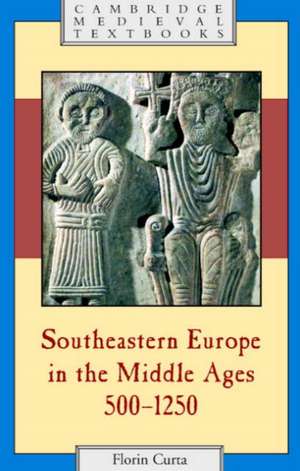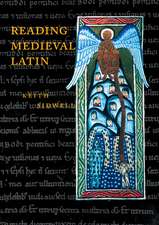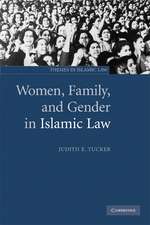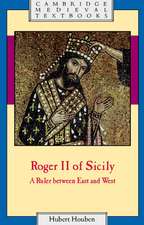Southeastern Europe in the Middle Ages, 500–1250: Cambridge Medieval Textbooks
Autor Florin Curtaen Limba Engleză Paperback – 30 aug 2006
| Toate formatele și edițiile | Preț | Express |
|---|---|---|
| Paperback (1) | 373.71 lei 43-57 zile | |
| Cambridge University Press – 30 aug 2006 | 373.71 lei 43-57 zile | |
| Hardback (1) | 885.74 lei 43-57 zile | |
| Cambridge University Press – 30 aug 2006 | 885.74 lei 43-57 zile |
Din seria Cambridge Medieval Textbooks
-
 Preț: 392.66 lei
Preț: 392.66 lei -
 Preț: 209.74 lei
Preț: 209.74 lei -
 Preț: 226.53 lei
Preț: 226.53 lei -
 Preț: 281.09 lei
Preț: 281.09 lei -
 Preț: 238.60 lei
Preț: 238.60 lei -
 Preț: 204.78 lei
Preț: 204.78 lei -
 Preț: 171.24 lei
Preț: 171.24 lei -
 Preț: 234.23 lei
Preț: 234.23 lei -
 Preț: 398.83 lei
Preț: 398.83 lei - 11%
 Preț: 554.35 lei
Preț: 554.35 lei -
 Preț: 285.27 lei
Preț: 285.27 lei - 11%
 Preț: 574.33 lei
Preț: 574.33 lei -
 Preț: 413.31 lei
Preț: 413.31 lei -
 Preț: 327.41 lei
Preț: 327.41 lei -
 Preț: 267.18 lei
Preț: 267.18 lei -
 Preț: 292.19 lei
Preț: 292.19 lei -
 Preț: 383.37 lei
Preț: 383.37 lei -
 Preț: 436.45 lei
Preț: 436.45 lei -
 Preț: 322.62 lei
Preț: 322.62 lei -
 Preț: 375.21 lei
Preț: 375.21 lei -
 Preț: 365.34 lei
Preț: 365.34 lei -
 Preț: 289.78 lei
Preț: 289.78 lei -
 Preț: 439.33 lei
Preț: 439.33 lei -
 Preț: 290.28 lei
Preț: 290.28 lei -
 Preț: 320.50 lei
Preț: 320.50 lei -
 Preț: 441.67 lei
Preț: 441.67 lei - 11%
 Preț: 457.95 lei
Preț: 457.95 lei -
 Preț: 363.65 lei
Preț: 363.65 lei -
 Preț: 319.74 lei
Preț: 319.74 lei -
 Preț: 287.39 lei
Preț: 287.39 lei - 14%
 Preț: 756.74 lei
Preț: 756.74 lei - 14%
 Preț: 885.74 lei
Preț: 885.74 lei
Preț: 373.71 lei
Nou
71.53€ • 73.71$ • 60.39£
Carte tipărită la comandă
Livrare economică 03-17 martie
Specificații
ISBN-10: 0521894522
Pagini: 528
Ilustrații: 7 maps
Dimensiuni: 140 x 216 x 27 mm
Greutate: 0.7 kg
Editura: Cambridge University Press
Colecția Cambridge University Press
Seria Cambridge Medieval Textbooks
Locul publicării:Cambridge, United Kingdom
Cuprins
Recenzii
Descriere
Southeastern Europe in the Middle Ages stood at a crossroads of trade and crusading routes and fell within the spheres of influence of both the Byzantine Orthodox Church and Latin Christendom. This authoritative survey draws on historical and archaeological sources in the narration of 750 years of the history of the region, including Romania, southern Ukraine, southern Hungary, Croatia, Slovenia, Serbia, Montenegro, Bulgaria, Macedonia, Albania and Greece. Exploring the social, political and economic changes marking the transition from late Antiquity to the early Middle Ages, this book addresses important themes such as the rise of medieval states, the conversion to Christianity, the monastic movement inspired by developments in Western Europe and in Byzantium, and the role of material culture (architecture, the arts and objects of daily life) in the representation of power.























